We interviewed the curator and critic Matteo Innocenti, director and creator of the new independent space “La Portineria” in Florence, with the support of the Poli Group, owner of the property, made up mostly of apartments for residential use, and the communication company PMG Italy which has its headquarters here.
La Portineria is located in a building of historical and aesthetic value, built by the architect Oreste Poli in the early seventies in exposed concrete, with a singular articulation of volumes and strong vertical development; it was one of the first buildings to propose this style in Florence and today it remains one of the most interesting examples.
Matteo Innocenti, over the years, has collaborated with various institutions, public and private spaces, artist residences; together with other founders, he has recently started the Estuario project space at the Ex Macelli complex in Prato (Officina Giovani), in collaboration with the city administration.
Federica Fiumelli: La Portineria – contemporary art projects inaugurated its activity on 20 February 2020. How was the project born and how does it fit into the current Florentine context? How much is Florence opening up to the contemporary?
Matteo Innocenti: The first necessity, generally referable to my curatorial practice, dates back to an earlier period, that is to say that for some time I had been reflecting on the potential connected to the direction of an independent exhibition space in the city where I was born and raised. The contingent occasion was the friendship that binds me to the Poli Group, owner of the building where La Portineria is located: during the restoration phase of the building – modernist architecture dating back to the seventies, by Oreste Poli – I noticed a space near the entrance, still not affected by the works, and I immediately had the intuition of being able to assign it to contemporary art. The idea was accepted, it was supported, so the project started.
Context is an essential factor; I am not referring only to the history of the building, but also to the city district in which we find ourselves – residential type, with very limited cultural activities. La Portineria aims to be both a research and dissemination space, in fact among the primary objectives there is the creation of an effective relationship with the people who live in the area. If we then broaden the discussion to the overall scenario of contemporary art in Florence, I believe that first of all there are some points to be clarified.
The rhetoric of the Renaissance city anchored in the past is only partially true; Florence for decades, albeit in alternate phases, has demonstrated and demonstrates vitality. This is particularly true for the present, as the cultural proposal is strong. It is necessary to make distinctions: even though there are institutions and bodies with a highly appealing programming, linked to contemporary art, the number of spaces active in research and experimentation remains minimal. Therefore, as far as possible, La Portineria intends to contribute to the reduction of this shortcoming.
“Eliminare la carne” by David Casini is the first exhibition to be hosted within La Portineria’s programming. Could you tell us how this exhibition idea was born – which already as the title promises, draws from an important imaginary – both cultural and artistic?
La Portineria will change exhibition format every year (although, given the emergency situation, there will be postponements and changes). The first year cycle has the title “A Solo”, it consists of four solo exhibitions concentrated on a reduced number of works, preferably, but not exclusively, created in the recent period.
With David Casini, the first artist of the cycle, we have had the opportunity to collaborate in the past; I was sure of his ability to interpret space and create a valuable project. “Eliminare la carne” derives from the present phase of his research, which concerns the relationship with art history. In general, I believe that Casini’s work develops as a process marked by phases of deconstruction and reconstruction; in the past this has concerned various aspects, including natural and artificial, now art is at the center: specifically some great authors, the most loved ones, “treated” as a living matter (rather than as fixed models to be contemplate). David chooses figurative fragments from their corpus and recombines them in a personal way, to create new works. In the exhibition for La Portineria he relates with Paul Klee, Medardo Rosso and Pablo Picasso, through particular elements – found in the catalogs published in the 1960s and 1970s, when images rather than printed were pasted to the pages. This led him to make collages, a sculpture that is also a clutch bag, ceramic masks. “Eliminare la carne” means precisely this: appropriating something and making it live differently, in the present. In fact, the title is related to the inauguration date, Shrove Tuesday: a call to Carnival (carnem levare, in fact), a celebration during which, with extreme freedom, every social role was reversed, given that people had the freedom to take on, albeit temporarily, the appearance of others. “Eliminare la carne”, starting from the history of art, develops through the practice of disguise, camouflage.
One of the peculiarities of this project is the accompaniment of a textual dialogue, of deepening, between the artists and the curator. I think this is a precious gift, although it must be said that someone thinks that the exhibitions should be enjoyed without too much intellectual tinsel – sometimes the texts appear abstruse and accessible to a few, and press releases are often the refuge of journalists assault. How important do you think writing is in the current exhibition panorama?
I agree with you that texts are often written in excessively intellectualistic language, which unfortunately denotes the opposite of what is intended: a poor ability to understand the work and communicate it. After all, resorting to this type of language is a form, sometimes ferocious, of self-protection – the tangible effect of which is the hiatus between contemporary art and people. I also agree that the work of art expresses itself, without the need for external “tools” (indeed, it would be appropriate for this to happen more).
Should we therefore conclude that any form of curation and art criticism is useless? I don’t think so. After the first emotional impact, which concerns the personal sphere, the more intimate one, writing takes on the function of deepening: it can explain to us in what context a work was born, from what need or will, its possible interpretations. In a reflection developed for an online project, I had entitled a text of mine “Philology for contemporary art”, which might seem a contradiction: but I believe that curating and criticizing art – as a pure mediation activity, and not of artistic creation, I want to emphasize it – they are a way of making art history in real time. Unlike historiography which addresses the past, sources are not textual in the present: they are the artists themselves. That’s why the idea of talking to the authors, and printing a booklet to be made available for free, on the street. Those involved, or even just intrigued by the exhibition, can have the opportunity to learn more through the artist’s answers.
What will La Portineria’s next appointments be? How those already planned will transform, given the current health emergency in which we find ourselves?
Being a new project, I felt it inappropriate to radically change the program. Furthermore, I believe that the emergency is leading us to develop a profound reflection, which cannot find answers immediately. For now, we keep the A Solo cycle paused, waiting to start again. However, this does not mean that we are standing still. During this month, April, the first exhibition of Satellite was scheduled, a project space by Francesco Ozzola, director of the Suburbia Gallery in Granada: Satellite will be based in the space next to La Portineria, carrying out its own programming. Not being able to have a physical inauguration for now, we thought of creating an online preview, publishing various materials that concern the project as a whole, the first exhibition, the individual artists.
Nobody can predict how long this emergency will last, so we will have to adapt as needed.
For many years your activity as an independent curator has been very important; for those like me who have undertaken the path of independent curator for a few years, it is important to see how the older generations of curators are able to offer interesting stimuli and opportunities for reflections such as La Portineria. What can you recommend, as a curator, to younger ones who may want to undertake this type of job, often alas underestimated or overrated … Have you also had some inspiring mentor as a young man? Readings or exhibitions that then marked you in your work?
The job of the curator is rather bizarre (although in my opinion – not identically but in an analogous way – it can also be found in past centuries); I mean that only in recent years has it come “professionalizing” through dedicated study paths. When I started, about fifteen years ago, it was almost an improvisation, there were no specific practices to refer to – certainly some famous precedents, such as Harald Szeemann’s activity, were a point of reference. But I must say that the beauty of this “exercise”, in my opinion, lies precisely in the fact that every stimulus converges to form us: obviously artists, but also poets, philosophers, historians, scientists and so on inspire us. This openness, almost a lack of limits to one’s own area, unfortunately can also lead to exaggerations: I refer to the formula of the curator and all-tyrannical curator, who uses works of art as cards in the service of his own reasoning (almost never interesting); modality that has worked so well in recent years. More than advice, I would like to refer to values (reminding them of myself): humanity, passion, honesty, originality and, consequently, pride in what is being done. In a general vision, the curator contributes to the culture of the present by supporting artists to strengthen their role in society.
It is not the first time that you work with David Casini, I also remember other exhibitions in Prato a few years ago, what relationships do you try to establish with the artists you relate to?
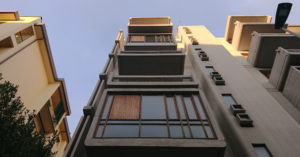 Palazzo Poli in Florence, headoffice of La Portineria
Palazzo Poli in Florence, headoffice of La Portineria
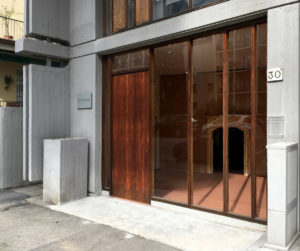 La Portineria, Firenze
La Portineria, Firenze
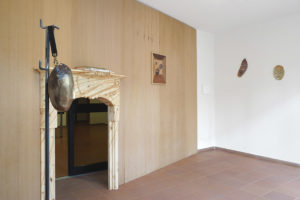 David Casini, Eliminare la carne, 2020. Installation view at La Portineria, Firenze
David Casini, Eliminare la carne, 2020. Installation view at La Portineria, Firenze
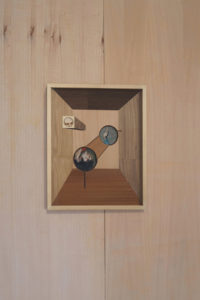 David Casini, pagg. 0, 7, 35, 2018 – wood, wood inlay, glass, print – courtesy CAR DRDE Bologna
David Casini, pagg. 0, 7, 35, 2018 – wood, wood inlay, glass, print – courtesy CAR DRDE Bologna
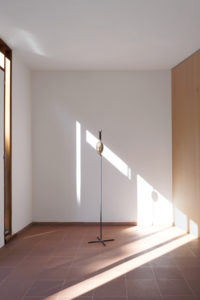 David Casini, Tre piccole gioie I, 2019 – brass, velvet, leather, iron – courtesy CAR DRDE Bologna
David Casini, Tre piccole gioie I, 2019 – brass, velvet, leather, iron – courtesy CAR DRDE Bologna
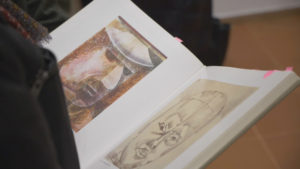 David Casini, Eliminare la carne, 2020. La Portineria, Firenze
David Casini, Eliminare la carne, 2020. La Portineria, Firenze
What interests me is the constant deepening. Sometimes it is a matter of collaborating with very young artists, then it is like a mutual attempt in which the action advances the words themselves, since the thought is not yet structured. Other times the relationship takes place with more experienced artists; here the work changes: I think it is essential to know every aspect of their research, talking for a long time, visiting the studios, building the exhibition together. Meeting again, after a certain period, is beautiful and interesting, since you have the opportunity to evaluate the path taken in the meantime. With David it was such an opportunity.
The global pandemic that is taking place will surely change any scenario, how do you envision the art in the immediate post-virus?
I think it is very difficult for everyone to imagine. There was a strong shock, it is clear; but the first doubt is whether the effects of it will persist even in a normalized social situation or if our memory will quickly forget what we have “touched”, now. Let’s say that this concerns more the substance of the internal relationships within the artistic system, and then consequently the relationship with the public. On a formal level, however, it seems to me that we can believe, with a high probability, that web technologies and tools will become – or rather, are becoming – more and more important. We are still in an immature phase, in fact the contents are often an identical translation, with other media, of what could happen live: videos of directors explaining the museum collections, sites that host virtual exhibitions, supplementary content on social networks and so on. It seems to me that in general the result is still not satisfactory – it must be considered that in many cases we have been forced to improvise – in any case the road is traced: they are all possibilities that we will refine. Of course, this opens up a huge question, the material, physical relationship with the work of art. I am a convinced supporter of his need, this does not mean that a balance with virtuality cannot be achieved. It will be a highly investigated topic in the immediate future.
Info:
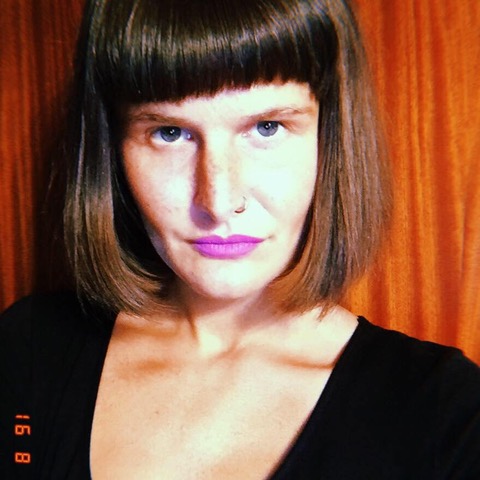
(1990) Graduated at DAMS in Bologna in Visual Arts with a thesis on the relationship and the paradoxes that exist between photography and fashion, from Cecil Beaton to Cindy Sherman, she specializes at the Academy of Fine Arts in Bologna in the two-year course in art teaching, communication and cultural mediation of the artistic heritage with a thesis on the historical-critical path of Francesca Alinovi, a postmodern critique. Since 2012 she has started to collaborate with exhibition spaces carrying out various activities: from setting up exhibitions to writing critical texts or press releases, to educational workshops for children, and social media manager. She has been collaborating since 2011 with various magazines: Vogue online, The Artship, Broken Fracture, Wall Street International Magazine, Forme Uniche Magazine.


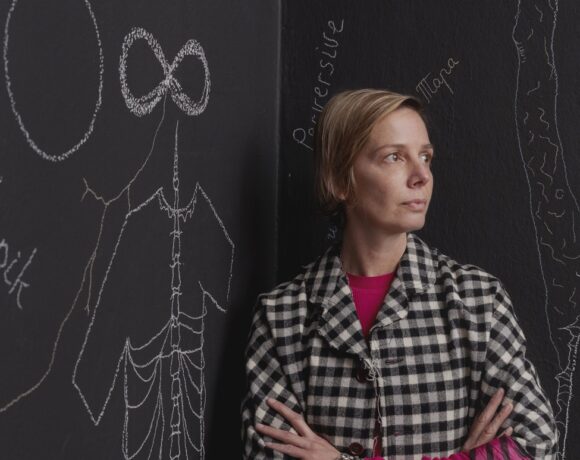
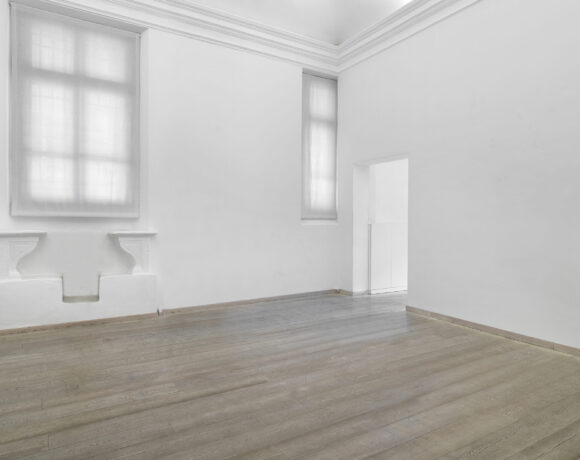
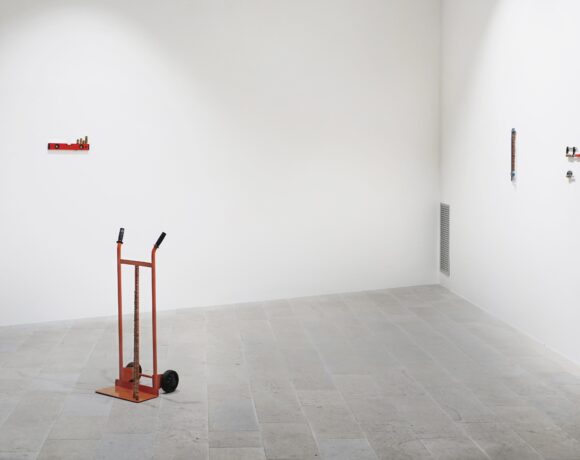

NO COMMENT